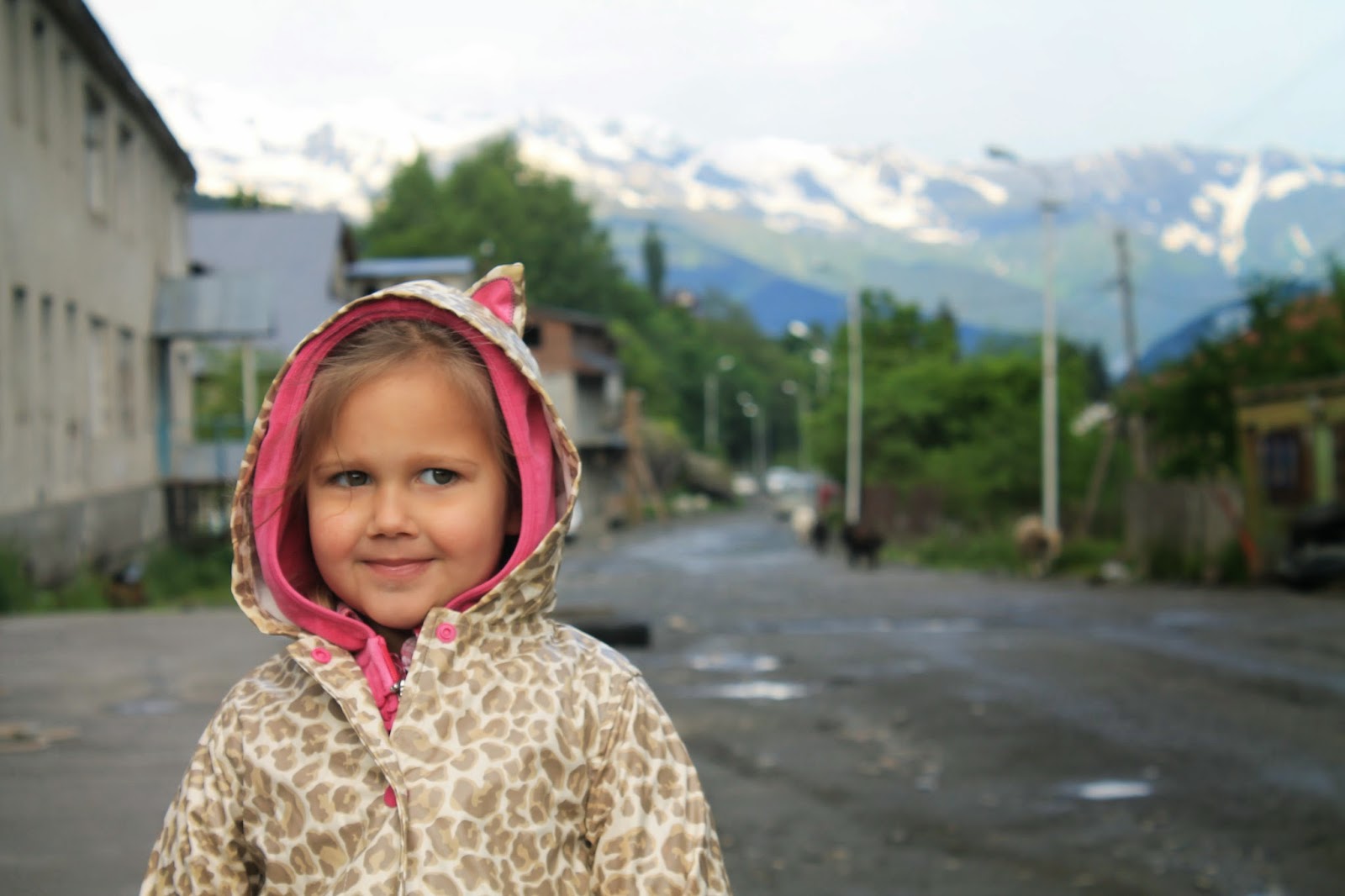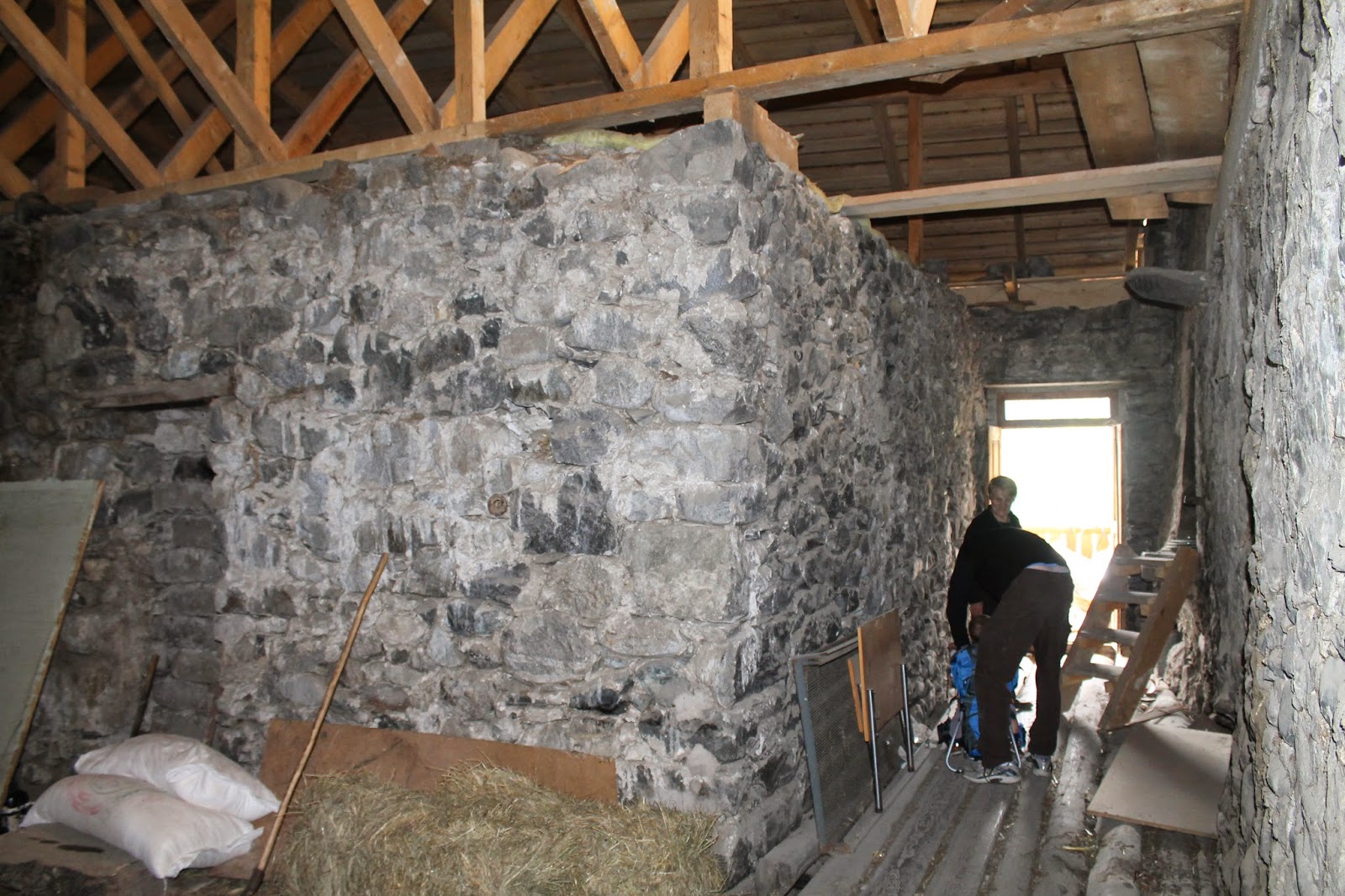When I moved to Yerevan, I had dreams of owning a Niva, the tiny 4x4 hatchback that is a mainstay of the roads in the former Soviet Union (and probably rural Russia, though not so much Moscow). I was strongly discouraged from buying one by everyone who knew anything about them. One of the local consular staff half-joked to me that if I did buy one, I should make sure to get one that was manufactured in the morning, because by afternoon all the workers are drunk.
So I drove a Jeep Cherokee in Armenia. And I wasn't entirely against the idea when Jeremy decided to buy a Niva here last year. He used it primarily for commuting the five minutes to and from work, and ended up driving up to four other grown men at a time.
It looked a little crowded to me, but then, Nivas and other cars native to this part of the world are no strangers to being jam-packed.
I got into a car accident in March that took our Ford out of commission for two months (due to snail-like action from our insurer and the time it takes to ship parts to Georgia), and so I spent some time driving the girls to and from school in the Niva. Thankfully my dad taught me to drive stick when I was 16, so it was only the Niva's particular quirks that I had to learn.
First of all, it has a throttle. You have to pull out the throttle to start the car when it's been sitting for awhile. Second, it has an inadvertent kill switch. If you press one of the buttons marked with a lightbulb above the stick while the car is in gear, it will die. Pretty awesome, right?
The first day I drove it, Tbilisi was being inundated by monsoon-like rains. Every dip in the pavement became a lake, and I held my breath while driving through, hoping the water wouldn't consume my tiny little tires.
The windshield wiper was next to useless. I say "next to" because when the wiper flew off in the middle of heavy traffic, my visibility was worsened just slightly. The entire car was already irretrievably fogged up, to the point that there was zero visibility out of the tiny rear windshield. That day I learned that, if the Niva slightly ahead of you tries to merge into your lane, narrowly missing your front bumper in the process, it is likely not grossly negligent driving, but simply that he cannot see you.
I also learned that there is a reason men drive these cars hunched over the steering wheel. I had assumed it was because there isn't enough space in the car for them - but Georgians as a whole are pretty short and though the car is small, hunching is not necessary for space reasons. I, however, found myself hunched over the steering wheel for a different reason - I was trying to get the car to go faster. Any faster than 65 km/hr (40mph), and it felt like doors would rattle right off their hinges. To say nothing of projectile windshield wipers.
The good thing about Nivas (and similar cars) is that they can be fixed with some silly putty and a rubber band - which is often necessary, right there in the middle of the road.
While I really detested driving that car, I will say that it taught me some humility. As terrifying as it can be to navigate the roads of Georgia in a large, sturdy truck, it is immeasurably more frightening to be driving a rusty tin can amid the SUVs. I learned to give the Nivas a little more space and be less of a road bully. My driving habits, like those of most Americans I know here, have changed a lot in the last two years. It's going to be weird to get back to the States where people actually stay in their lanes and signal before turning.
I do have to mention, though, that while every last Georgian driver would fail the behind-the-wheel test at any American DMV, the women drivers here really are the worst. They don't exhibit the same brash insanity of the drivers of shiny SUVs, who skid along the highways on two wheels as they cut everyone off so that they can get to the shwarma stand first. Rather, if you are behind a car that slows to 3 mph when approaching an intersection, wavering hesitatingly between lane markings, I will bet the farm that the driver is a woman. The American stereotype finds truth in the Caucasus.
I will leave you with the rules of the Georgian road, as I have observed them.
1) Not sure which lane is going fastest? Drive between them. It's ok - the lane markings are just there so someone can have a job painting them.
2) If you need to stop your car to look under the hood or take a wizz, wait until you have just rounded the corner and are not visible to cars behind you. That way no one will see your pee pee while you do your business, and they'll probably be able to swerve to avoid hitting your car at the last minute.
3) If you would like to pass someone, drive right up onto their tail and honk loudly. That way they will be sure to notice you. Flashing your lights won't work; they're too busy texting or lighting a cigarette (or both) to notice.
4) This is important. Merge first, look second. Better yet, don't look at all - it will just confuse you. The other driver will move. He doesn't want you to hit his car.
5) If you are unsure about where you are going, just stop your car in the intersection while you figure it out. You wouldn't want to miss your turn.
6) No parking spots outside the quickie mart? Just park in the righthand traffic lane. The other cars will go around you.
Happy Driving!



















































